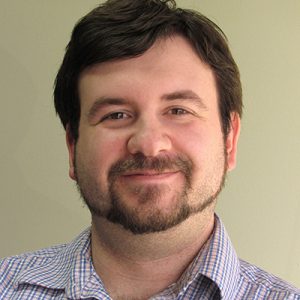Third Thursday Program Kickoff and Q&A
 |
12.6.17 By Zach Donisch, Director of Membership, AEHIA |
On Nov. 16, AEHIA hosted its first in a monthly series of online AEHIA Live webinars, titled the “Third Thursday” program. Designed by the AEHIA professional development committee, the Third Thursday program commits to an education- or professional development-focused webinar held on the third Thursday of every month.
AEHIA’s first Third Thursday webinar was titled, “Meaningful Use Means Using your EHR Meaningfully,” and covered efficient electronic medical record usage. The hour-long event brought together presenters from Huntzinger Management Group, an AEHIA Foundation partner, and provider members from several healthcare delivery organizations who all spoke to the complexity of electronic health record refinement and how to drive the last 10 percent efficiency out of existing software. Here’s a short sample of the Q&A from the webinar. If you missed the event, you can view the archived session here.
Q: For Laura Smith, VP & CIO at UnityPoint Health – how do you manage the governance for User Groups? Thinking about small optimizations – do these roll up to a larger governance group, or do user group leaders work directly with Epic analysts to implement changes?
A: We have a group called the clinic leadership group, which is a governance and decision-making group for anything clinical related, IT or otherwise, that is our highest level. A directive from that group was to invest heavily in optimization, as you saw in the presentation. Below that clinical leadership group is a group we call our clinical prioritization committee. They are responsible for prioritizing the IT-related work in the clinical space. They help us identify what amount of resource dedicated to enhancements, what amount dedicated to enabling strategies, optimizations, etc. So, we have a governance structure in place that helps us with that. That’s made up of representation from all key customer groups in regions we support, which is a pretty hefty group for our organization. But, it has helped us make better decisions.
For some day-to-day enhancements, we have something we call service groups, which looks more at a user group type level. They help direct us on what their priorities are. We ask for departments within our organization to identify their top five enhancements, usually smaller in nature, and we roll those up and constantly plug away at them with the dedicated amounts of resources that our governance group says we can spend.
Q: For Jon Westmore, Director, IT Applications at Beebe Healthcare – what strategies have been successful for recruiting seasoned talent?
A: That’s always a challenge. A couple of things that have worked for us is that when we do have shortfalls and we need specific skill sets, we’ve done a lot of hard work to develop partnerships with our consulting companies. To get specific skill sets we sometimes bring in consultants initially, and as they get comfortable we recruit them into the standard workforce. We also spend time looking internally and develop our talent all the way up, starting with our front-line first responders from our help desk, moving them through other teams as they show talent, and looking internally to ensure we have good opportunities for our employees. Our CIO is very supportive of our education budget, and we have a lot of flexibility to use that budget to develop talent, which means we end up developing internally rather than the time and expense of looking elsewhere. Finding good people is always a challenge.
Q: For William Tandy, CIO at UPMC Pinnacle Hanover – can you expand on your discussion of the patient digital experience?
A: It is something that we talk a lot about and struggle with, to be very candid. The question itself means different things to different people. We’re trying to open it up, and I mentioned this in my presentation. We try to encourage people to access portals, but there are many different portals depending on the hospital, practice, specialists, etc. Something we have to keep in mind when we put the information out there is that it has to be simplified to the patient’s perspective. It can’t just meet a set of assigned criteria, it’s important we look at the information and ensure it’s in a format that’s understandable from the patient perspective. Sometimes, we don’t do the best job with translating that information.
Editor’s note: Here’s a sneak peek at the upcoming AEHIA Live Third Thursday webinars. Click on the titles of each webinar to register.
AEHIA Public Policy Workshop
Noon EST, Dec. 21
A detailed overview of the public policy issues affecting AEHIA members throughout the healthcare applications community. The presentation will include an overview of areas ranging from Meaningful Use, MACRA, interoperability, security, patient identification, telehealth and more. In addition to a wide-ranging briefing on current affairs, Mari Savickis and Leslie Krigstein, CHIME’s Washington D.C. insiders, will present ways to get involved with advocacy in Washington.
Speakers: Mari Savickis, CHIME Vice President of Federal Affairs and Leslie Krigstein, CHIME Vice President of Congressional Affairs
A Strategically Aligned Program Management Office
Noon EST, Jan. 18
Learn how to best assess the health of and align your Project Management Office to the strategic
priorities of your executive staff, and focus on projects that contribute the most to the goals of the
organization. Yuri Campbell and Kevin Peck will walk you through a methodology that will do just that,
while creating buy-in from your teams and fostering greater cohesion.
Speakers: Yuri Campbell, Army Medicine, and Kevin Peck, Regional Health Command, Atlantic
More AEHIA News Volume 1, No. 2:
- Viewing Application Updates as ‘Not Just an IT Project’ Benefits Organizations– Jonathan Fritz, Chief Strategy Officer, Symphony Corporation
- AEHIA’s Vision in 2018 – Chris Cook, Vice President, AEHIA
- Looking to contribute to the AEHIApplications Newsletter? Email your contributions to [email protected].
